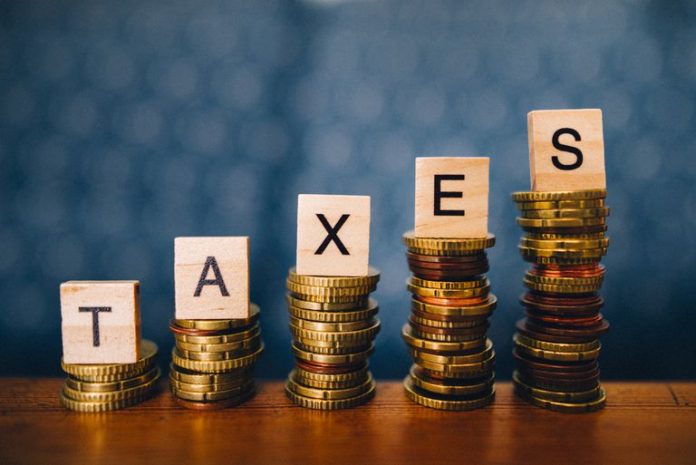This article is written by Ravi Singh, pursuing a Certificate course in Advanced Corporate Taxation from LawSikho.com.
Table of Contents
Introduction
Tax Buoyancy is a term used to measure and indicate the rate of tax response due to an increase in the Gross Domestic Product (GDP) of any nation i.e. how much tax and also collections are increasing due to an increase in national income nation. The response rate in good tax system is said to be smart and efficient. Unfortunately developing countries, they need this tax food in their tax systems because they do not know much about tax culture.
Unfortunately, the reduction and avoidance is also due to the institutional structures of this developing economy. It is therefore now recognized that such a low rate of tax collection is not the cause of much less the level of revenue rather than that is largely due to the many barriers that is because the institution creates restrictions on the economic system.
Buoyancy in tax and its importance
A good tax system is characterized by a high response to tax revenue on changes in funding for public entities or national revenue; the process of measuring this response is this tax tightness and tax tightness. Tax policy forms an important part of the development process in a developing economy. Total tax revenue depends on three variables, that is, the tax rate, the tax base and the national income.
For these three it is an active relationship between tax revenue and national revenue used to account for tax. In this case tax revenue is regarded as a variable depending on the national income taken as an independent variant. Whereas Tax evasion is defined as a real change in taxes yield, in relation to changes in national income. There are options to choose from that occur in the construction of annual tax that affects the yield of tax revenue. Taxes Attempts to quantify tax responses from tax intelligence measures.
Trends
The tax reform in 1999-2004, especially in the indirect tax government, facilitated the tax boom of the 2004-09 period. The 4-year period between 2009-10 and 2011-12 saw an unusual tax boom. The 2014-19 period saw an increase in tax expenditure. In the first half of 2019-20, the total tax revenue grew by only 1.5% over the same period of 2018-19. However, tax cuts dropped to about 0.15. It is assumed that the minimum economic growth rate in the first quarter is 10%.
The Role and Importance of Individual Taxes
Personal income tax is the only significant source of direct income in India. However, its value as a source of income has declined since the country gained independence, and other such taxes as Company tax and Property tax exemption of Personal Tax in terms of revenue from the provincial coffers. Private taxes in India can be said to contain non-agricultural taxes income for three types of tests:
- People
- Separate Hindu families
- Unregistered firms and other human organizations
The important role that personal taxation plays in the country’s economy is possible learned in a variety of ways. One of the most common and widely used methods is dosage personal income tax on the total tax revenue, national income (GDP, GNP, NNP). The measure of the strength and flexibility of personal tax in India was made by different economists at different times.
The first attempt at measurement The stability and flexibility of personal tax in India was made by G.Sahota from 1951-52 to 1957-58. G.S. Sahota shows that the intensity of PIT lower compared to the PIT height, the higher the indicator the level of exploitation. However, the coefficients of buoyancy and elasticity estimated by GS Sahota are not strictly comparable due to time differences.
Calculation and parameters of buoyancy
Tax resilience and flexibility can be calculated using different alternatives:
- The traditional model used estimating tax increases requires GDP or proxy base (in which case the strength of the tax base in GDP and should be limited, as in Girouard and Andre, 2005) to be the main determinant of tax revenue;
- Equally The correction method involves separating data into revenue variables according to the data provided by government;
- The dummy variation introduces the dummy variation each year where the foreign tax policy changes;
- The formation of permanent rates includes the collection of figures from the actual tax receipts and monetary data for tax bases and related taxes; basic annual tax bracket then multiplied by the basic values associated with the abridged products;
- The divisive index presents representatives of optional tax measures;
- Tax revenue is usually measured by lowering the revenue log to the GDP log, sometimes with controls of other factors that affect revenue performance. Increased taxes differ from the so-called macroeconomic tax code, which is the same but which fixes money data for changes in tax policy parameters.
Tax buoyancy around business cycle
While the increase in taxes may be a good thing to bring to the forefront of the expansion economy, it is by no means a metaphor for the downfall. In a growing economy, tax increases may be due to rising tax rates, as more people and businesses are drawn into the tax net because of rising profits and income. In a recession, however, with revenue and profits in a downward spiral, the accumulation of exorbitant taxes may be the result of a tax-exempt tax on the necks of taxpayers to meet its monetary objectives.
Targeted eye contact that is not achievable at such times, can have a detrimental effect on already weak economic activities. Consumers who are already reluctant to let go of their wallets in the middle of income may be forced to cut spending to pay for taxes, which has led to a ‘counter-stimulus’ use. Businesses, which are already in a state of risk aversion, can postpone their investment and savings plans to avoid conflicts with the taxpayer. Tax monitoring reports and occasional demands also do little to ensure that foreign direct investors in the country provide policy assurance to investors who want to make long-term commitments to it.
Overall, continuing to focus on increasing annual tax increases, regardless of the economic downturn, has the potential to end all good work done by the government in recent years, by significantly reducing Indian corporate tax rates at global competition levels and greater FDI policy. Instead of setting comprehensive collection targets, the institution should now look at reversing and reducing personal tax rates, a more sophisticated GST and significantly reducing compliance burden, so that these measures pay for better collection when the economy returns.
Examples
Okech and Mburu (2011) analyzes tax revenue responses to national reforms income-generating revenue and tax resilience through the provision of various tax preparation measures has been promoted over the years. They found that tax revenue was not renewable and was not in revenue apart from long-term changes since 1986. Thus they recommend that there is a need to review the tax policy measures applied over years of tax making responding to national income while developing tax collection methods.
Case 1
Venkatachalam v. Bombay Dyeing & Manufacturing Co. Ltd. The suggested dispute is related to the type of Excise work. It was argued that the Excise Duty excise duty which was due at the time of the levy and should have been intended and expected by the legislature to be transferred to the consumer and as a recurring function of such duties they do not have these qualifications where of Parliament. To support the argument, the appellants’ lawyers relied on Bank of Toronto v. Perhaps the question of the decision was whether certain taxes levied on commercial enterprises that run a business were direct taxes or indirect taxes for the Provinces or the Dominion.
Lord Hobhouse once said:
“Direct or indirect taxes. Direct taxes are those that are intended for those people who are intended or required to pay. Indirect taxes are those that are demanded by one person in anticipation and with the intention that you will protect yourself with another person’s money; that is tax or customs.”
Conclusion
Direct tax collection – the rate of tax growth on GDP growth – is about 1.12% of FY20 if money is exempt from corporate tax cuts, the Central Board of Direct Taxes (CBDT) said. The government’s argument is that the legitimacy of the economy, aided by GST and demonetization, has had a positive impact on the use of taxes, even if the economy sees growth.
After all, the FY20 explosion was still lower than the 1.21 found in FY19. Tax subsidy is a measure of the effectiveness of a tax incentive or ‘tax effort’, and if it is greater than 1, it shows that collections are growing faster than GDP.
Determining factors
The increase in taxes depends largely on the size of the tax base, the friendliness of the tax administration, the rationality and simplicity of tax rates. Therefore, an annual tax increase may reflect the negative impact of a developmental set for that year. In general, however, the long-term trend of tax revenue over a period of about 5 years from policy changes made in the last few years.
References
- https://www.iasparliament.com/current-affairs/tax-buoyancy-and-tax-devolution
- https://www.financialexpress.com/economy/fy20-direct-tax-buoyancy-at-1-12-tax-efforts-yielding-results-cbdt/1984221/
- https://www.indianeconomy.net/splclassroom/what-is-tax-buoyancy-how-it-works-for-the-government/
- https://www.jstor.org/stable/41259813?seq=1
- https://www.ideals.illinois.edu/bitstream/handle/2142/27272/taxbuoyancyvsela1272leut.pdf?sequence=1Japanese
- http://www.indusedu.org/pdfs/IJRMEC/IJRMEC_336_37552.pdf
- https://core.ac.uk/download/pdf/211609836.pdf
Students of Lawsikho courses regularly produce writing assignments and work on practical exercises as a part of their coursework and develop themselves in real-life practical skill.
LawSikho has created a telegram group for exchanging legal knowledge, referrals and various opportunities. You can click on this link and join:
 Serato DJ Crack 2025Serato DJ PRO Crack
Serato DJ Crack 2025Serato DJ PRO Crack











 Allow notifications
Allow notifications



